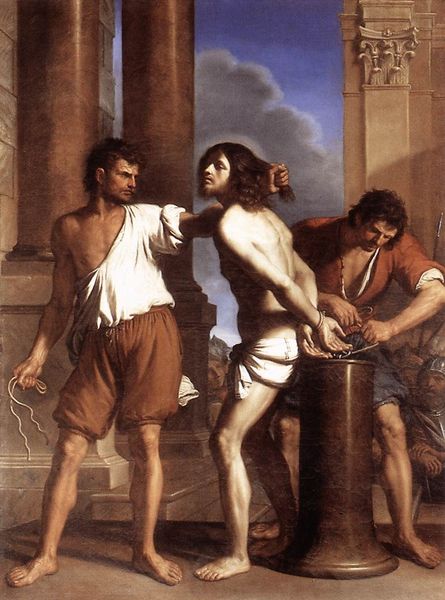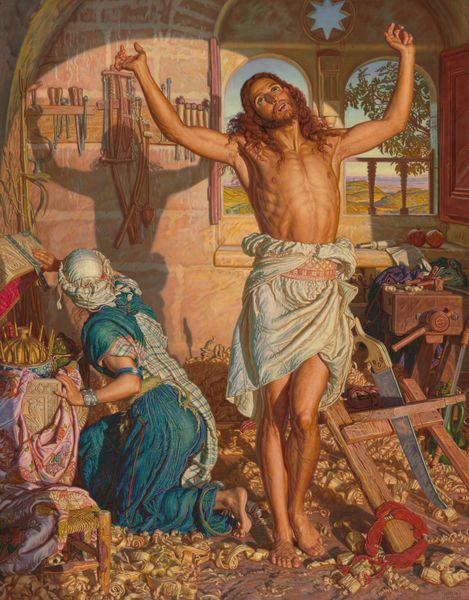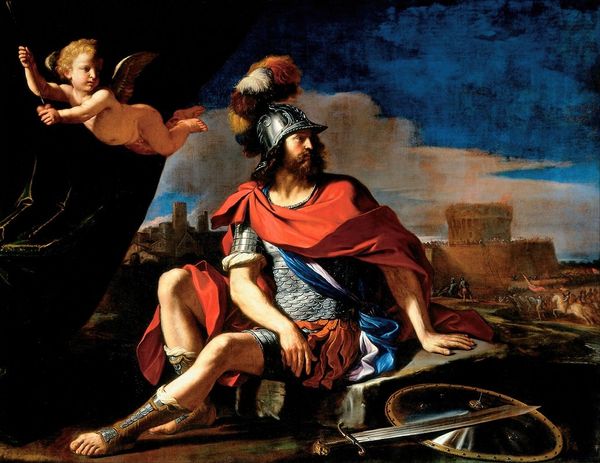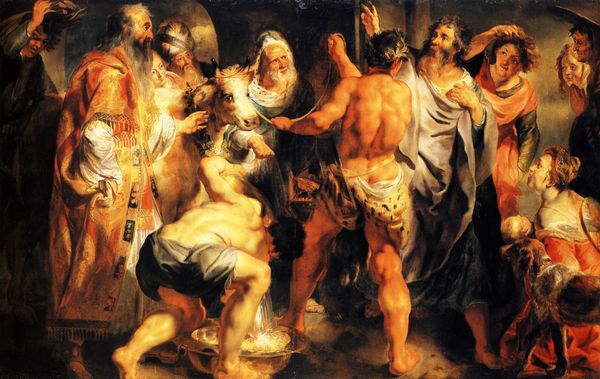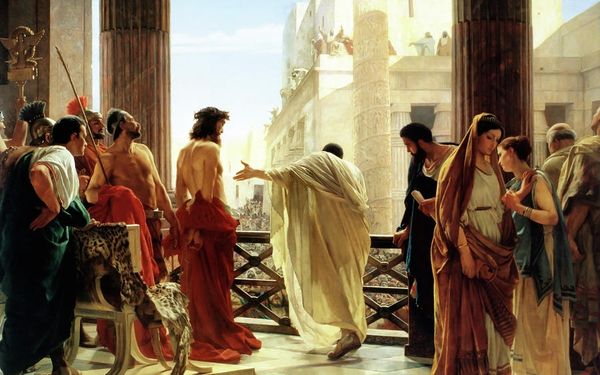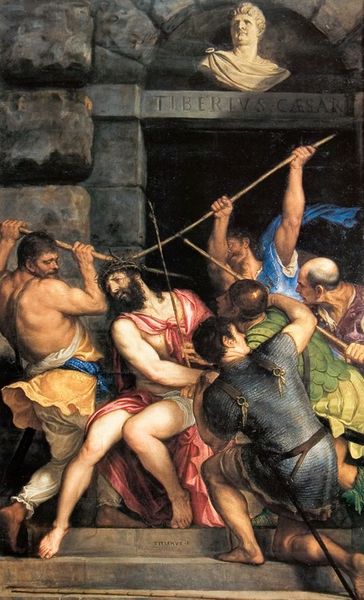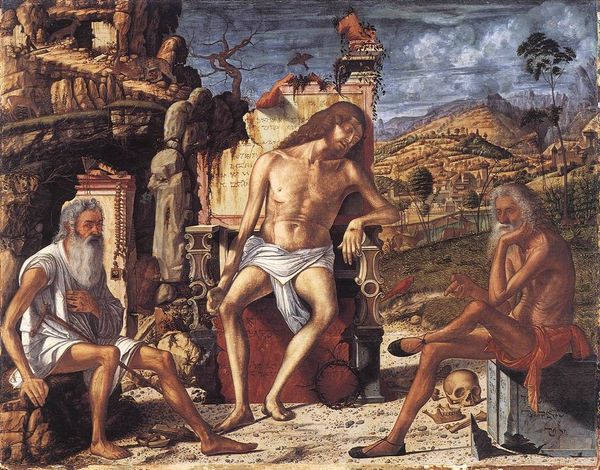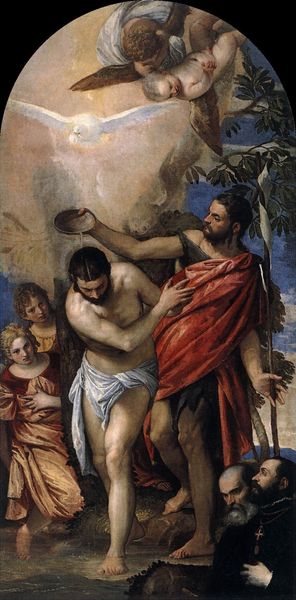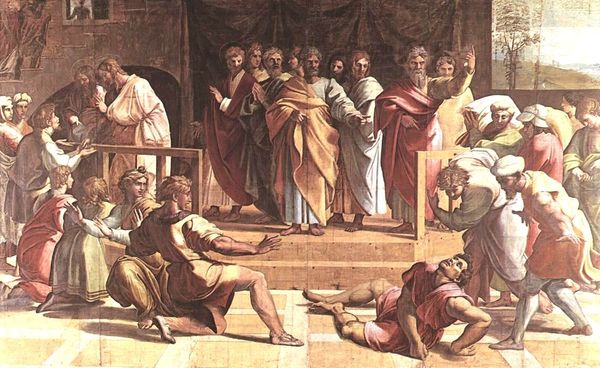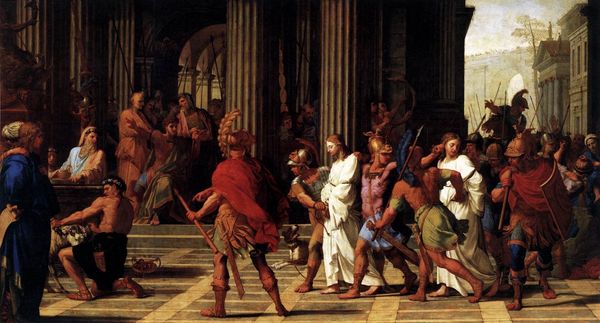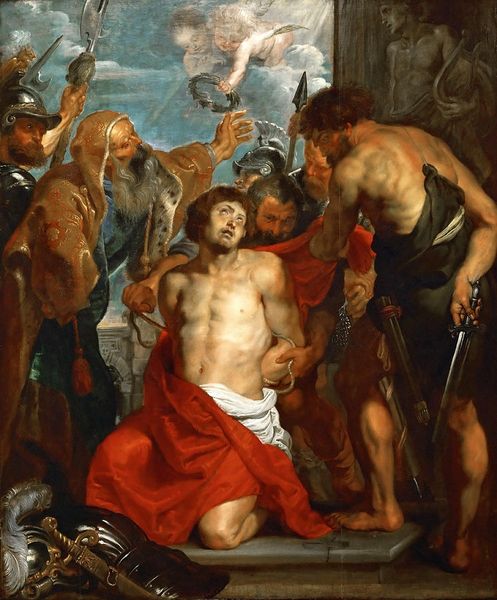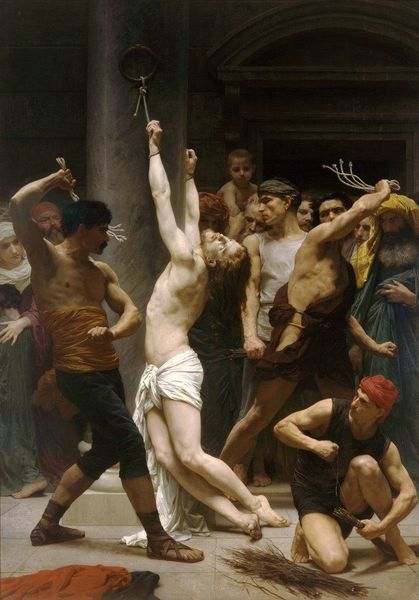
painting, oil-paint
#
narrative-art
#
baroque
#
painting
#
oil-paint
#
figuration
#
oil painting
#
jesus-christ
#
chiaroscuro
#
christianity
#
men
#
history-painting
#
christ
Dimensions: 124 x 144 cm
Copyright: Public domain
Curator: This painting, attributed to Giovanni Domenico Tiepolo, captures "Flagellation". What strikes you first about it? Editor: Its raw energy, definitely. The dynamism of those figures whipping Christ creates a maelstrom of brutality. You almost feel the sting yourself, doesn’t it? It is both terrifying and somehow balletic. Curator: The Baroque really knew how to weaponize drama. Beyond the immediate violence, think about what “flagellation” represents—both religiously and culturally. It’s the stripping bare, not just of the flesh, but of dignity, innocence, humanity itself. It also evokes power structures. Those in charge flaunting their authority through cruelty. It is fascinating how visual cultures like these keep reappearing, doesn't it? Editor: Absolutely. And it is cleverly composed, as the perpetrators nearly overshadow Christ; yet the painter’s treatment, especially that heartbreakingly bowed head, immediately makes him the focal point. I'd describe it as agony centered within a vortex of rage. Also, it seems like Tiepolo used light masterfully. Notice the shadow-and-illumination effects—the 'chiaroscuro,' heightening the emotional punch? Curator: Exactly. Chiaroscuro was vital to baroque sensibilities. What would a historian of symbols find here? To me, the column itself is an iconic element with multifaceted meanings. Is it strength? Oppression? Confinement? Thinkers have often seen columns in dreams to refer to male virility, though more negatively, like here, it means someone or something unyielding to any suggestion, like someone or something hard as a rock. Even those brutal, raised weapons aren't simply instruments of torture but emblems of domination and control. Editor: This makes the emotional layers richer than expected. As with all things Christian in art, and Christian life as a whole, one might say it symbolizes the "triumph over" evil that always looks like being “triumph OF.” The ability of humanity to create that dialectic between virtue and viciousness is disturbing. It reflects humanity’s enduring struggles. Tiepolo, in my mind, gets at this in a truly remarkable and challenging way. I walk away thinking "Is this it? This the legacy we should avoid?". Curator: Yes. Even stripped, degraded, and hurt, a presence persists. Editor: I’m taking away how such stark imagery prompts complex moral self-reflection even centuries later.
Comments
No comments
Be the first to comment and join the conversation on the ultimate creative platform.
